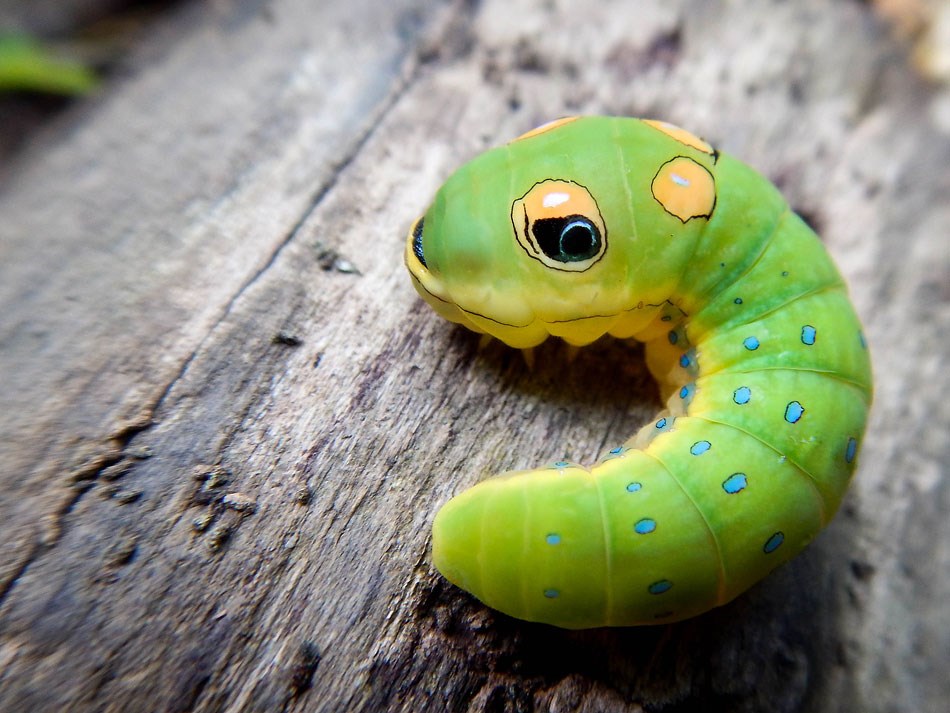Hawaii's "Bone Collector" & Other Unusual Creatures | Nature's Secrets
Are you ready to delve into the hidden lives of creatures that defy expectations? The natural world is full of surprises, and few are more astonishing than the adaptations found in the smallest of organisms, especially insects, which are masters of survival.
Consider, for instance, the Hawaiian inchworm, a creature that has turned the tables by becoming an ambush predator. It's a clear example of the principle that in nature, rules are often made to be broken. But the Hawaiian islands are also home to another unusual caterpillar. This caterpillar doesnt hunt; it scavenges. Its a bone collector, living within the silken embrace of spider webs.
This "bone collector" caterpillar has found a unique niche in the intricate web of life. Rather than being a food source, it thrives by feeding on the discarded remains of the spider's meals. This includes bits and pieces of insects the spider has caught, such as wings and legs. This caterpillar, from the moth genus Hyposmocoma, finds shelter within the very webs, tucked away in places like tree hollows and rock crevices.
The story of the Araneus gemmoides spider, commonly known as the cat-face spider or jewel spider, also reveals fascinating insights. These orb-weaver spiders, found across North America, are not only identifiable by their unique markings that resemble a cat's face but also showcase a complex life cycle and ecological role. The cat-face spider's presence is often noticeable near light sources or in enclosed spaces. This spider is a fascinating species belonging to the orb weaver family Araneidae.
| Feature | Description |
|---|---|
| Common Name | Cat-face Spider, Jewel Spider |
| Scientific Name | Araneus gemmoides |
| Family | Araneidae (Orb-weaver spiders) |
| Appearance | Distinctive markings on the abdomen resembling a cat's face, with "horns" on the sides. |
| Habitat | Found in North America, with webs often near light sources and in sheltered areas. Includes 2 countries and 8 states in the United States. |
| Behavior | Orb-weaver, constructs webs to catch prey. |
| Diet | Feeds on insects caught in its web. |
Reference: Wikipedia
The intricate dance between predator and prey is vividly displayed in the life of this spider. Once a caterpillar is ensnared and paralyzed, the spider wraps it in webbing, injecting digestive fluids to liquefy the insides before sucking them out, leaving behind an empty husk. This interaction illustrates the complexity of food chains. Consider the energy flow in the ecosystem, from the leaves, through the caterpillar, to the spider, then to the bat and finally the owls. The energy transfer at each stage is less efficient, but the natural balance endures.
The eastern tent caterpillar offers another example of insect life. These caterpillars produce an egg mass, with as many as 300 eggs, that will remain dormant until the following spring. Their damage to their host is generally temporary, but their impact is notable.
The world of caterpillars offers a fascinating array of adaptations. Consider the varieties of slug caterpillars: the saddleback caterpillar, monkey slug, crowned slug caterpillar, and spiny oak slug, each with its own unique features.
Understanding these ecological relationships highlights the interconnectedness of life and the dynamic nature of ecosystems. The bone collector, the cat-face spider, and the eastern tent caterpillar each offer a glimpse into the hidden complexity of the natural world.
The use of scientific names is crucial for accurately identifying living organisms, especially given instances of common name duplication. The jewel spiders shared name with an Australian spider highlights the value of these scientific terms.
Managing caterpillar infestations, particularly of the eastern tent caterpillar, often involves proactive measures. Removing egg masses during winter or pruning affected branches can reduce the damage. Additionally, cultural practices like regular inspections of spider plants can also help prevent infestations.
Even in the realm of creativity, the insect kingdom inspires. There is a knitted creation of a caterpillar, ladybird and spider, each crafted to fit a Ferrero Rocher chocolate, demonstrating the impact that these creatures have on the human imagination.
Citizen science projects offer another facet to the exploration of these creatures. Projects, like the one measuring seasonal variations of arthropods on foliage, provide valuable insights into insect populations and behaviors, and the interplay of each organism with its environment.
The study of insect life, from the lowly caterpillar to the cunning spider, offers endless discoveries. It is a reminder of the constant evolution and adaptation that shape our world. From the Hawaiian inchworm, the ambush predator, to the "bone collector," the world of insects reveals an intricate web of life, where survival demands unique and unexpected strategies. As we observe these creatures, we develop a deeper appreciation for the resilience and diversity of life on Earth.


